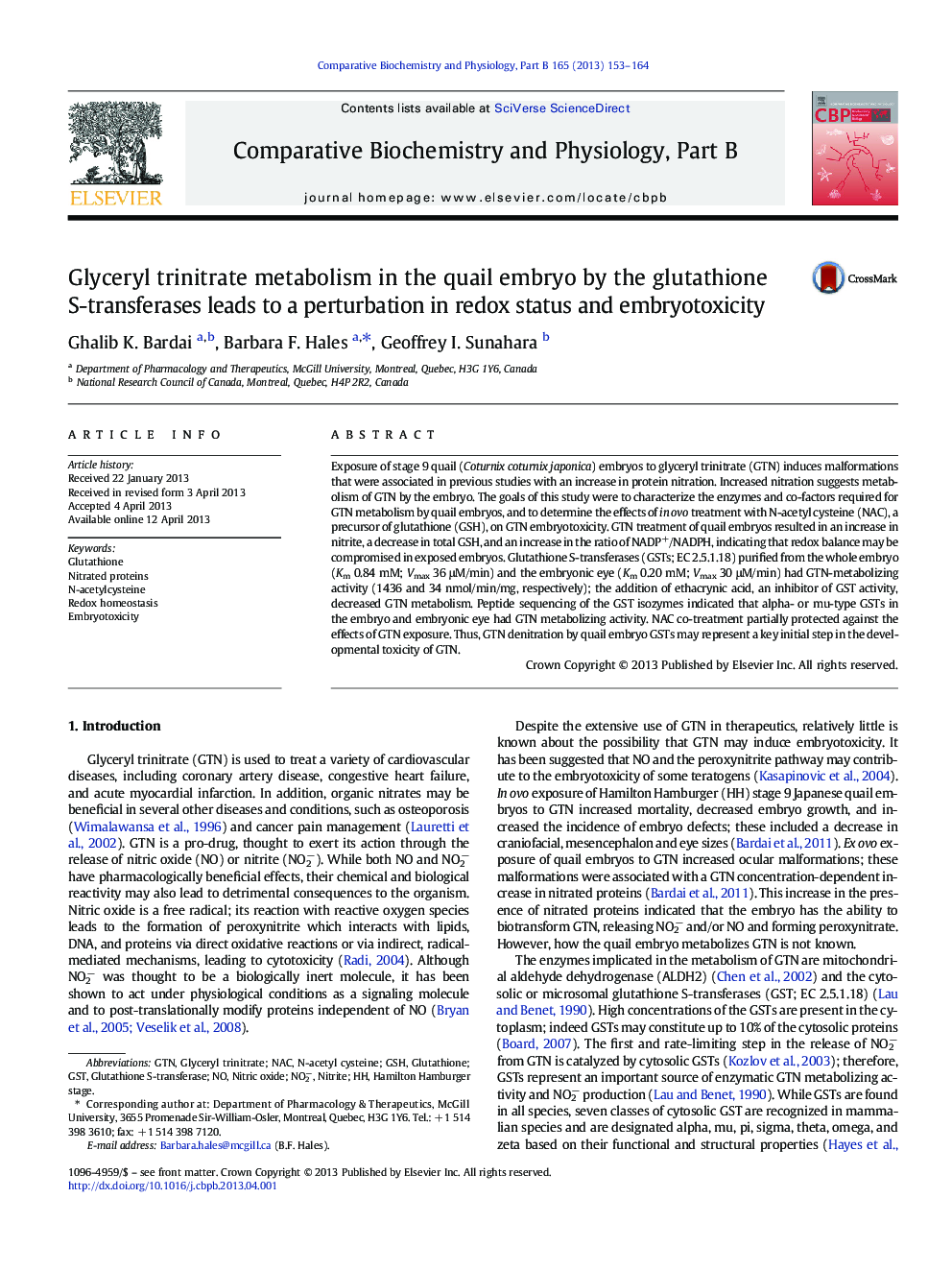| Article ID | Journal | Published Year | Pages | File Type |
|---|---|---|---|---|
| 1975508 | Comparative Biochemistry and Physiology Part B: Biochemistry and Molecular Biology | 2013 | 12 Pages |
Abstract
Exposure of stage 9 quail (Coturnix coturnix japonica) embryos to glyceryl trinitrate (GTN) induces malformations that were associated in previous studies with an increase in protein nitration. Increased nitration suggests metabolism of GTN by the embryo. The goals of this study were to characterize the enzymes and co-factors required for GTN metabolism by quail embryos, and to determine the effects of in ovo treatment with N-acetyl cysteine (NAC), a precursor of glutathione (GSH), on GTN embryotoxicity. GTN treatment of quail embryos resulted in an increase in nitrite, a decrease in total GSH, and an increase in the ratio of NADP+/NADPH, indicating that redox balance may be compromised in exposed embryos. Glutathione S-transferases (GSTs; EC 2.5.1.18) purified from the whole embryo (Km 0.84 mM; Vmax 36 μM/min) and the embryonic eye (Km 0.20 mM; Vmax 30 μM/min) had GTN-metabolizing activity (1436 and 34 nmol/min/mg, respectively); the addition of ethacrynic acid, an inhibitor of GST activity, decreased GTN metabolism. Peptide sequencing of the GST isozymes indicated that alpha- or mu-type GSTs in the embryo and embryonic eye had GTN metabolizing activity. NAC co-treatment partially protected against the effects of GTN exposure. Thus, GTN denitration by quail embryo GSTs may represent a key initial step in the developmental toxicity of GTN.
Keywords
Related Topics
Life Sciences
Biochemistry, Genetics and Molecular Biology
Biochemistry
Authors
Ghalib K. Bardai, Barbara F. Hales, Geoffrey I. Sunahara,
